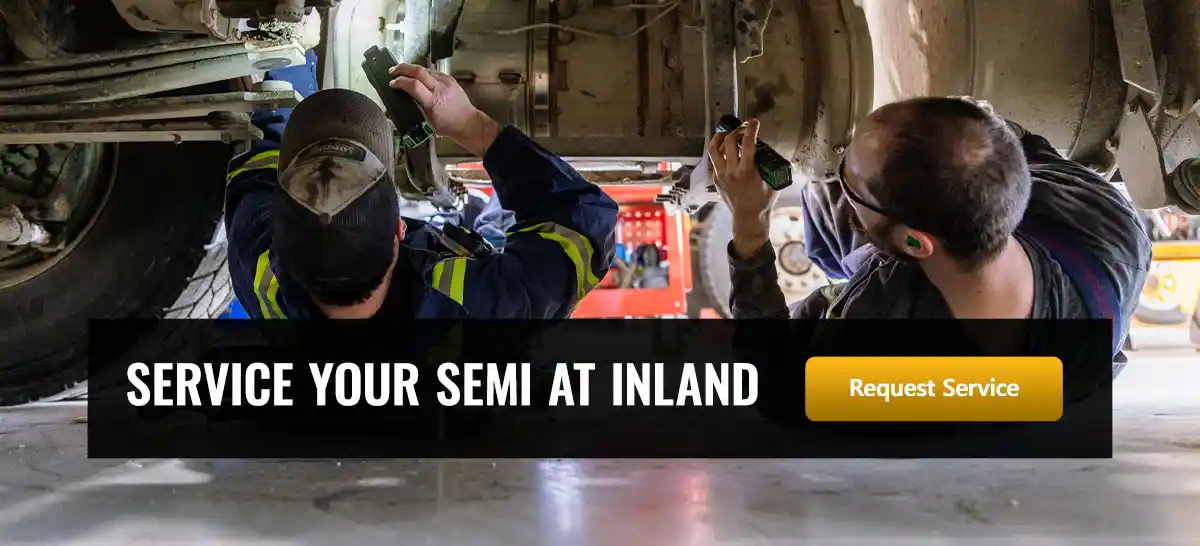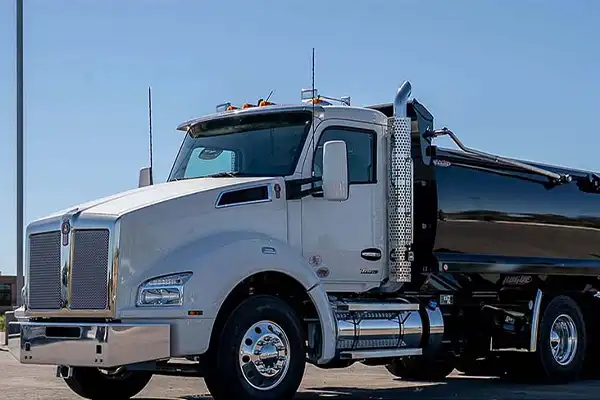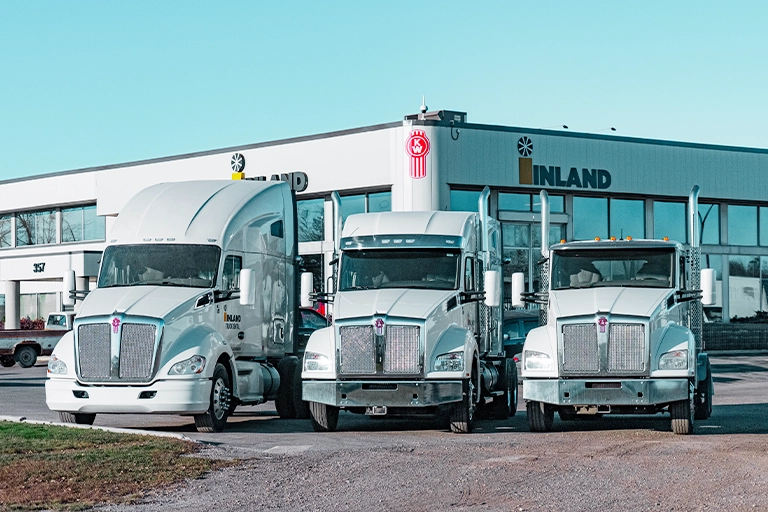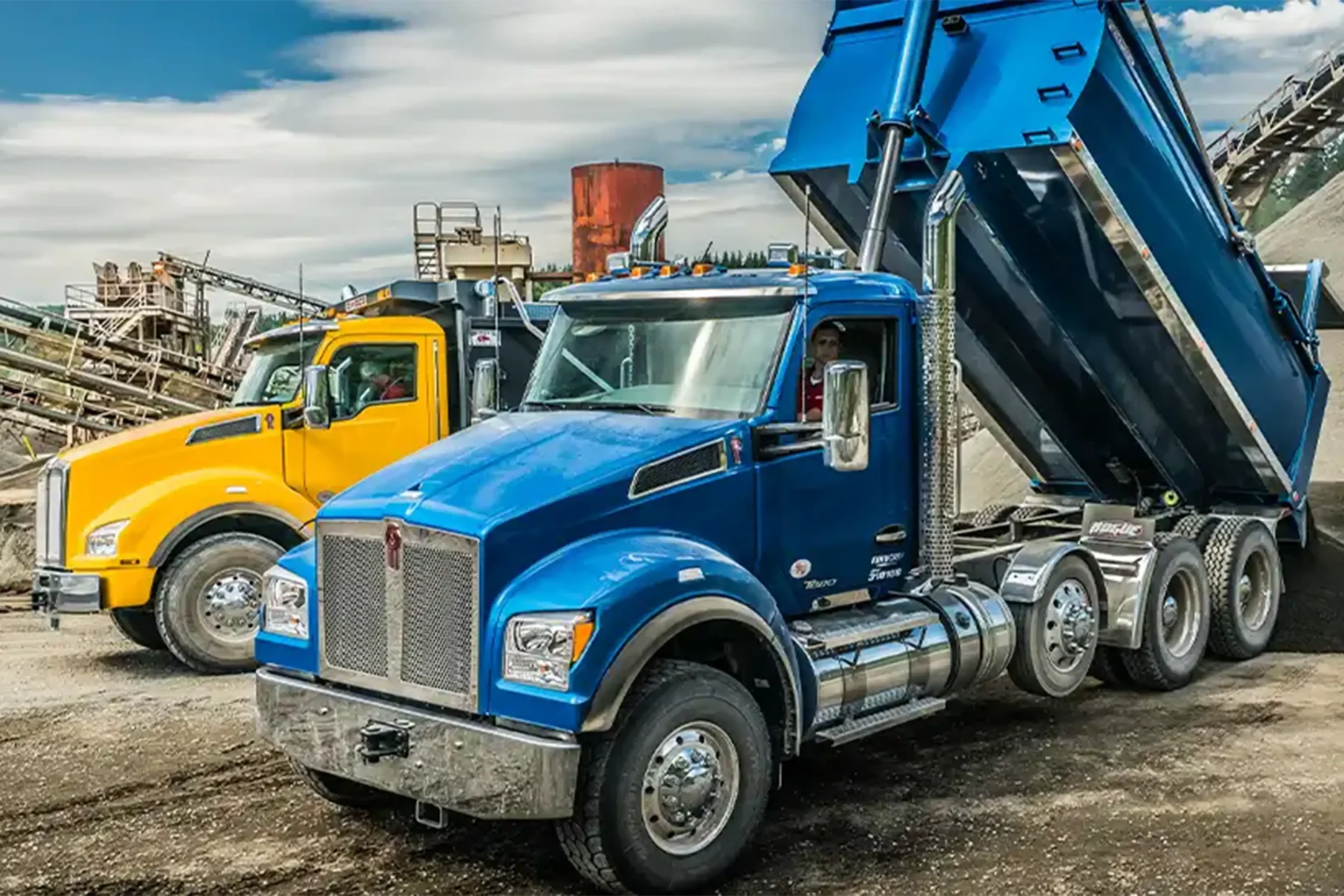A semi-truck’s load plays a vital role in vehicle performance and your ability to maintain control. It affects gravity, braking distance, and inertia, which impacts braking, steering control, acceleration, and maneuverability. To sustain proper driving control, you must implement loading practices that allow axles, suspensions, gravity, and inertia to support safe freight transportation to the destination.
Key Terms That Define a Semi’s Weight
To determine if you have overloaded a semi-truck or tractor-trailer, it’s essential to understand these primary weight-related terms:
- Gross vehicle weight rating (GVWR) is the maximum vehicle weight the manufacturer has set.
- Gross combined weight rating (GCWR) is the sum weight of a loaded semi and its attached trailer or trailers.
- Payload capacity is the maximum weight the vehicle can safely carry.
- Towing capacity is the highest weight a tractor-trailer can pull.
- Curb weight is the weight of an empty semi-truck.
- Trailer tongue weight is 10% to 15% of the weight a loaded trailer exerts on the semi’s tongue.
In the U.S., the Federal Highway Administration (FHWA) limits the GVWR to 80,000 pounds for semi and trailer combinations. In Canada, weight caps vary across vehicle categories. For instance, the interprovincial GVWR for an eight-axle B train double is 62,500 kilograms. Explore the complete interprovincial weight limits for each category.
What Does It Mean When a Semi-Truck Is Overloaded?
A semi-truck is considered overloaded when it exceeds the payload or towing capacity. Discover how to determine these weights below.
Calculating Payload and Towing Capacities
Since the manufacturer indicates the truck’s GVWR and curb weight in the manual or on the vehicle’s body, you can easily calculate the payload as follows:
- GVWR – curb weight = payload capacity
If you attach a trailer to the truck, subtract the trailer tongue weight to calculate the payload using this formula:
- GVWR – curb weight – trailer tongue weight = payload capacity
You can use this formula to determine the semi’s towing capacity:
- GCWR – curb weight = towing capacity
Also, subtract the weight of attachments, passengers, spare tires, toolboxes, and other accessories to get an accurate towing capacity.
Complying With Axle Weight Limits to Avoid Overloading
In addition to calculating the payload and towing capacities, you can avoid an overloaded semi-truck by observing the single axle weight limit of 20,000 pounds and the tandem axle group cap of 34,000 pounds in the U.S.
In Canada, the single axle limit for a B train double, for example, is 9,100 kilograms and 17,000 kilograms for tandem axle groups with a spread ranging from 1.2 meters to 1.85 meters.
How to Prevent Truck Overloading
To avoid semi-truck overloading, you must adhere to regulatory weight limits and weigh the vehicle before hitting the road. Invest in a truck scale to confirm weight compliance.
You can also follow these tips to prevent overloading.
Distributing the Load Evenly
Distribute the load’s weight evenly along the trailer’s length and maintain the axle weight within the required limits. To achieve this goal, divide the freight’s weight by the semi-truck’s square footage to determine where to place the load. This information is crucial in arranging pallets of different weights inside the trailer.
Consider these tips to ensure safe weight distribution:
- Establish the empty weight of the semi-truck and axle.
- Place the heaviest items at the bottom and center of the vehicle for stability.
- Avoid positioning many heavy items on the side.
- Load the heaviest cargo at the front to avoid overloading the rear axle while observing the axle weight limits.
- Use airbags or cardboard dunnage to fill the voids between pallets.
- Lower the cargo’s center of gravity to maintain stability.
Confirming Cargo Weight
While delivery notes and invoices indicate cargo weight, verifying this information is essential before loading freight. This verification ensures the accurate distribution of the load for optimal stability.
Securing the Load
If you’re hauling goods in the U.S., adhere to the Federal Motor Carrier Safety Administration’s (FMCSA) freight securement requirements to prevent load shifting during transportation. If the cargo moves, you’ll overload the truck in certain sections, impacting braking performance and stability.
The FMCSA rules require a minimum of one tie-down for cargo 5 feet or less or 1,100 pounds or less. You must also inspect the securement devices for damage to ensure optimal functionality. In Canada, the National Safety Code (NSC) requires you to secure goods with tie-downs featuring working load limit markings.
Performing Routine Maintenance
Maintaining the suspension, axles, tires, and other parts ensures they can handle the weight and maintain stability. Component wear could worsen during long distances, shifting weight distribution, minimizing stability, and affecting driving control.
Staying Up to Date With Regulations
Stay informed about regulatory weight limits and securement rules to maintain compliance and avoid penalties. Regulators may change these laws occasionally, requiring you to stay current.
Eliminating Unnecessary Payload
To lower the total cargo weight, avoid carrying unnecessary equipment and other items. If the semi-truck has shelving or storage units you don’t need, remove them to prevent overloading. You can also invest in lighter parts, fifth wheels, and mounting systems to reduce the GVWR.
The Importance of Avoiding an Overloaded Semi
Maintaining the required weight limits can save money and time, allowing you to deliver the cargo on time while maximizing the potential for profits. Weigh stations issue expensive overweight tickets and require you to remove the extra weight before proceeding, affecting the schedule.
Other reasons to prevent semi-truck overloading include:
- Road safety: A stable tractor-trailer with evenly distributed weight and a lowered center of gravity is easy to maneuver and control. Eliminating extra weight also prevents tire blowouts.
- Infrastructure preservation: Observing weight limits protects roads and bridges from damage.
- Lower maintenance costs: When your semi-truck isn’t overloaded, you can protect the tires, brakes, springs, axles, and other parts from straining and wearing out fast.
- On-time delivery: Your truck can maintain reasonable speed in steep areas, enabling you to deliver goods on schedule.
- Fuel efficiency: A tractor-trailer uses less fuel when carrying the ideal weight than when overloaded.

Service Your Semi at Inland
Inland is a reputable semi-truck and commercial truck dealer with over 70 years of experience. While we have the World’s Best® lineup of Kenworth trucks, we provide expert parts, maintenance, and repair services for all semi-truck makes and models, including Volvo, Mack, and Peterbilt. Our highly trained technicians will ensure the semi’s components can handle cargo weight efficiently and avoid overloading.
To access these services, visit our Southern California, Arizona, New Mexico, British Columbia, Yukon, Manitoba, and Saskatchewan facilities. You can also request a service online.




